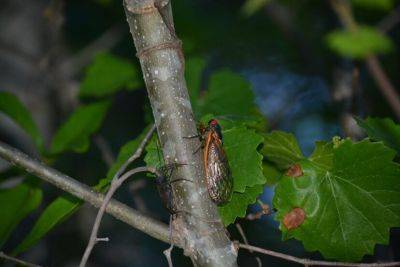What is this red-eyed creature found crawling up a pine tree?
Gardenig in state South Carolina. Tips & Guides

The Lone Ranger Is the 2024 Drink of Summer
Rachel Marek. Prop Styling: Addelyn Evans

April 29 Week 5 Garden Photos
Cicada Brood XIX has arrived in Greenwood County. Enjoy the amazing photos taken by HGIC Agent, Ginger Long. Brood XIX is one of the largest broods in the country, covering the greatest geographic area. In South Carolina, the emergence is projected to be in many upstate counties and counties along the Savannah River basin down to Aiken County. The adults live only for a few weeks, and after about a month, they will disappear as mysteriously as their arrival.
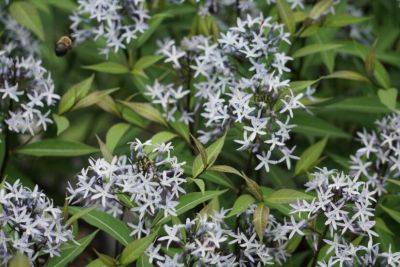
Bluestar
Bluestars are in the genus Amsonia. There are at least twenty-two known species, and most are native to the Eastern United States. All are in the Apocynaceae (Dogbane) family, so named because the milky sap is slightly toxic to dogs. Due to the unpleasant taste of the sap, Bluestars are deer- and rabbit-resistant. There are no known serious insect or disease problems.
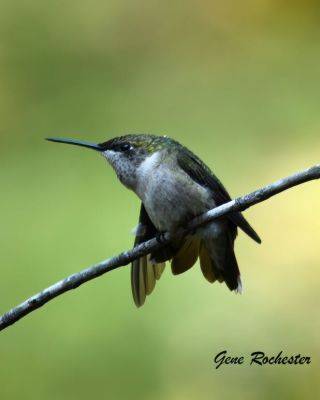
Do You Love Hummingbirds?
Ruby-throated hummingbirds: “Glittering fragments of a rainbow” John J. Audubon
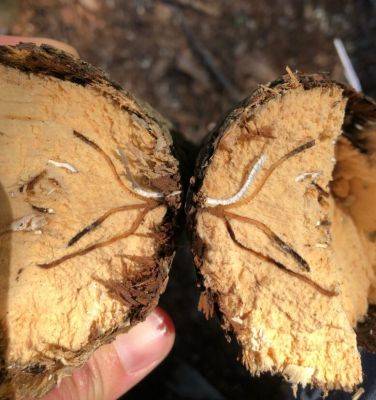
Ambrosia Beetles
Ambrosia beetles are common, tiny (only about 1/16” long), and can infest hundreds of different woody plant species. In South Carolina, these little beetles typically infest stressed trees, vines, or shrubs. Females will bore into stems and branches, creating a gallery. Beetles carry fungi on their bodies, and this fungus then grows inside the galleries, often appearing as white, gray, or black. The beetles feed on the fungus that grows inside the galleries.
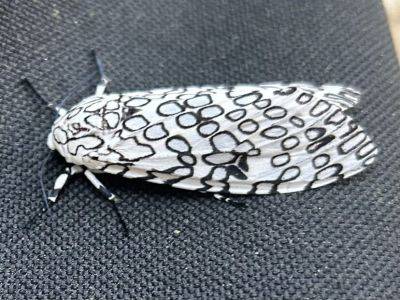
Question of the Week – Giant Leopard Moth
This Giant Leopard Moth (Hypercompe scribonia) was found on my grill cover as I went to cook some dinner one night last week. This is by far my favorite moth due to its striking appearance. These moths are common across South Carolina and have at least two generations per year. The larval form of this moth is commonly referred to as the giant wooly bear due to its black wooly appearance. They feed on a wide range of plants and should not be considered a pest for a grower or homeowner.

Canning Collards
South Carolina is blessed with year-round fresh green vegetables, and winter is for collard greens. They grow best in cool weather, and a brisk cold freeze makes them sweet. Collard greens are rich in vitamins and minerals, especially calcium. Just last week, I was fortunate to find a large bag with three healthy just-picked heads for just $3.00 at the farmer’s market and started planning my first-ever attempt at canning greens.

Sharing Nature with Children: Native Bees
Many children in my programs at the South Carolina Botanical Garden know an enormous amount about non-native honeybees. However, they are astonished to discover the vast diversity of native bees and their immense importance and efficiency as pollinators. In the United States, there are over 4000 native bee species. They range in size from the tiniest fairy bees (Perdita spp.) (found out west) to the giant carpenter bees (Xylocopa spp.). Here are some suggestions to increase children’s (and your) knowledge about our local native bees.

Question of the Week – February 28, 2024
This is Carolina jessamine (Gelsemium sempervirens). This native, evergreen vine is just starting to bloom.

Bradford and Callery Pear
Every spring, all over South Carolina, we see yards, abandoned lots, natural areas, roadsides, and, in some cases, forests fill with white flowers. These first white flowers of the year are nearly all from the Callery pear tree (Pyrus calleryana). This tree is native to China, and while they may look the same, many of the trees planted in yards, around businesses, and in other managed landscapes across South Carolina are cultivars of P. calleryana. One of the most common cultivars is the Bradford pear (more information on Bradford pears can be found on this Clemson HGIC fact sheet HGIC 1006, Bradford Pear). Bradford pears, by themselves, cannot produce viable seed. But, if pollen from a different flowering pear cultivar (or a wild Callery pear) pollinates a Bradford pear flower, then viable seed can be produced. The fruit is often eaten by birds, and birds doing what birds do (hint: they fly and poop), spread the seeds across the land. When these new plants grow, they’re now Callery pears, the wild relative of Bradford and other cultivated varieties of Pyrus calleryana.
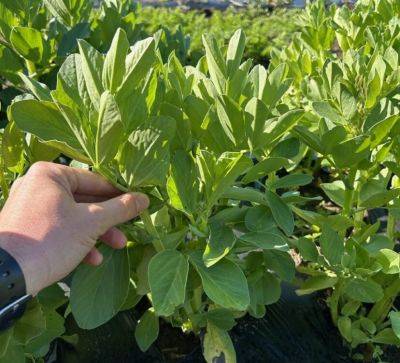
What Is It? Wednesday – Fava Beans
This crop growing on John’s Island in Charleston are fava beans or broad beans. They are grown in small acreages in South Carolina.

Stay Up to Date with Your Flu Vaccine
Keep yourself healthy this winter by staying up to date with a flu vaccination. Flu vaccines are your best line of defense against the current flu strains. These vaccines are safe and effective. However, it is still possible to contract the flu even after receiving the vaccine. Here’s why: The CDC partners with state public health departments and healthcare providers across the country each year to track flu strains. Flu vaccines must be formulated periodically to be effective against the most current flu strains. This means two things. First, a yearly flu vaccine is needed for up-to-date protection against the most currently prevalent strains. Second, there are always less prevalent flu strains circulating, and it is possible for you to become ill from a less prevalent strain despite being up to date with a current vaccine. But for most people, even if they do happen to become ill despite receiving the flu vaccine, studies show their symptoms are substantially reduced with fewer hospitalizations and deaths.1 Flu vaccination is especially important for the elderly and those with chronic health conditions who are at risk for more serious flu illness. Since 70-85% of flu deaths occur in people ages 65 and older, several new flu vaccine options are now preferentially recommended for this age group.1 Talk with your healthcare provider about which flu vaccine is best for you.

February 19 Week 3 Garden Photos
“As Barbara has injured her ankle and can’t get out to photograph, please enjoy a review of some of her favorite photo blogs. ~ Part 4 ~ ”
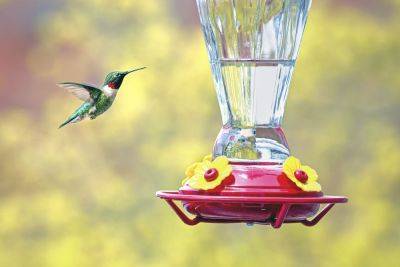
The Best Time To Put Out Your Hummingbird Feeders, According To Experts
<use xlink:href="#trending-icon" xmlns:xlink=«http://www.w3.org/1999/xlink»> Trending Videos <use xlink:href="#close-icon" xmlns:xlink=«http://www.w3.org/1999/xlink»>
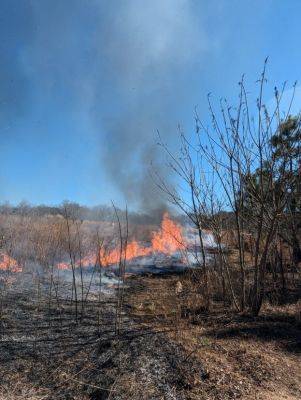
Fire!
Fire destroys, but it also purifies and enriches. For thousands of years, indigenous people used fire to manipulate the landscape. Burning was used to clear land for farming and settlement, maintain grasslands for forage and to aid in both hunting and gathering. We use it here at the South Carolina Botanical Garden to manage some of our habitats in the Natural Heritage Garden. In the Prairie Exhibit, fire is used to clear out woody plants that would ultimately shade out grasses. The ashes reinvigorate the soil with a nutrient dump. In the past, the resultant fresh new grasses would attract bison and other herbivores, which would then be hunted for meat and other materials. The Longleaf Pine Savannah Exhibit is also an example of a fire-maintained habitat. Burning consumes the leaf litter, enabling the longleaf pine seedlings to sprout; then, at most stages, they are fire-adapted and resistant. The suppression of fire throughout the United States rendered these habitats extremely rare.
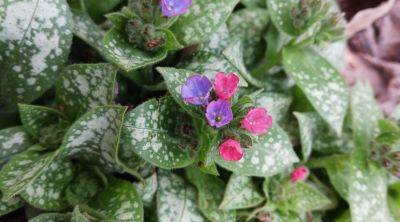
Lungwort for Winter Blooms
Brighten up a shady area in the garden with the colorful flowers and silvery foliage of lungwort (Pulmonaria spp.). It pairs well with hellebores, hostas, ferns, bleeding hearts, and other shade perennials. The patterned leaves have a silvery hue that contrasts well with the green foliage of other perennials. Plant it under deciduous trees or along woodland pathways for edging.
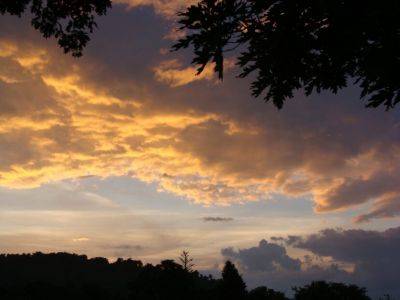
January 22 Week 4 Garden Photos
Beautiful South Carolina Sunrises, Winter Skies, and Sunsets

This Month in Your Garden – January 2024
January is a time for starting anew and planning for spring. Take notes and plan what you will do once spring weather arrives. Will you plan to add more flowering plants to attract pollinators? Or will you plan to grow a summer vegetable garden? The possibilities are endless, but no matter what you hope to achieve in 2024, pull out your garden journal and make notes on how to make your plans a reality.
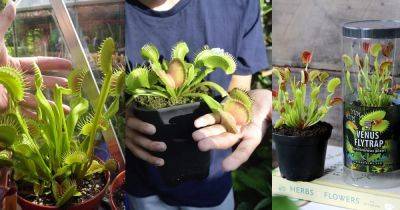
Giant Venus Fly Trap: How to Grow a Big Venus Fly Trap Plant
Learning How to Grow a Big Venus Fly Trap Plant is an art – from selecting the right soil mix to understanding its unique feeding requirements, we’ll tell you everything to make this carnivorous plant a living giant!
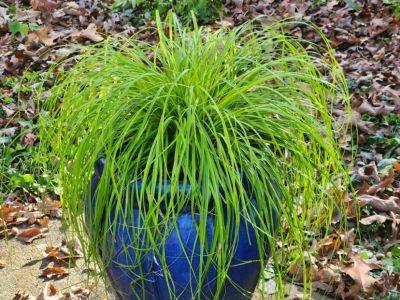
Japanese Sedges
Ornamental grasses are known for the foliage and texture they bring to the sunny garden. Grass-like plants called Japanese sedges can replicate that texture in the shade garden. Both Carex oshimensis andCarex morrowii share the common name, Japanese Sedge. These plants are evergreen in South Carolina, adding year-round interest to the landscape.

Beechdrops
Have you ever been walking through the woods and noticed small, brown stems sticking through the leaf litter (somewhat reminiscent of the handles of tiny witch’s brooms)? These are beechdrops (Epif agus virginiana), and if you look around, you will notice mature beech trees (Fargus grandifolia) with their smooth grayish bark.
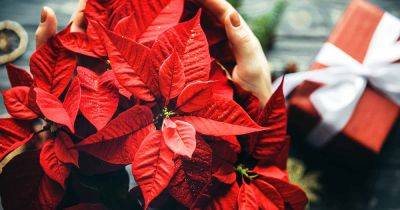
Christmas and Poinsettias: History of the Christmas Flower
Christmas and Poinsettias: History of the Christmas Flower
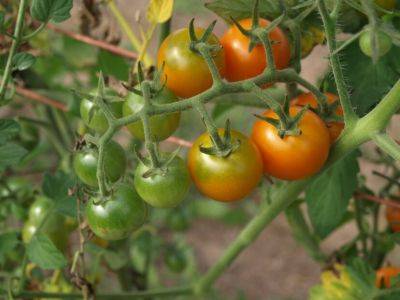
How to Lower Excessive Phosphorus in a Vegetable Garden with Cover Crops
You have received your soil test results and found that you have high phosphorus in your soil. Excessive phosphorus in the soil may be due to where you live, especially in the coastal areas of South Carolina, where there are natural phosphorus deposits present in the soil. If that’s the case, ensuring you don’t add any additional phosphorus products to your soil is important.
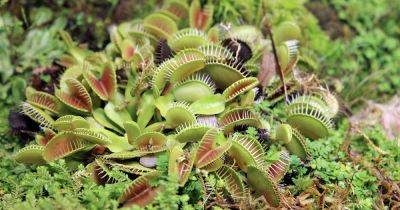
How to Encourage a Venus Flytrap to Close | Gardener's Path
How to Encourage a Venus Flytrap to Close
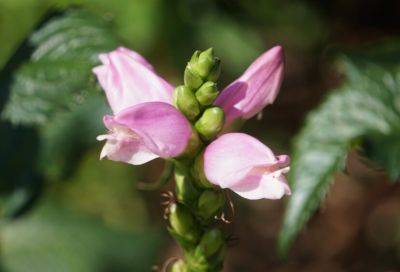
Pink Turtlehead
Pink Turtlehead (Chelone lyonii) is a native fall-blooming perennial that grows best in organically rich soil in the sun to part shade. In its natural habitat, pink turtlehead is found in wet wooded areas near streams in the Appalachian Mountains. It adapts easily to being planted in home perennial plantings as long as the soil stays moist, a perfect choice for a wet area in the landscape in USDA planting Zones 3 through 8. Due to South Carolina’s hot summer temperatures, plant it in an area that gives some shade protection from the afternoon sun.
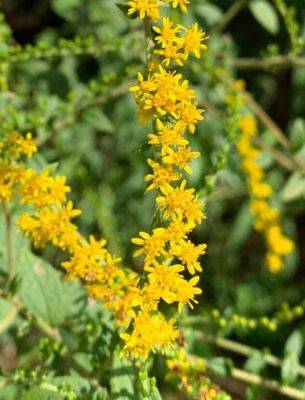
Glorious Goldenrod
I love this time of year when the roadsides and gardens become full of gold. Goldenrod is everywhere! It brightens the landscape and lifts my mood. Goldenrod comes in all different shapes, sizes, and even colors (Solidago ptarmicoides, for example, has white, daisy-like flowers). A search for goldenrod on the extremely useful and informative website Namethatplant.net returned 61 tax in the Carolinas and Georgia, a solidago for almost every garden situation. Zigzag goldenrod (Solidago flexicaulis) is an easy-care woodland goldenrod. Unsurprisingly, southern bog goldenrod (Solidago austrina) thrives in sunny, boggy areas. As its scientific name indicates, Solidago odora has fragrant, anise-scented leaves when crushed. Finally, South Carolina’s state wildflower, Solidago altissima (tall goldenrod), is a plant of drier, disturbed soil.
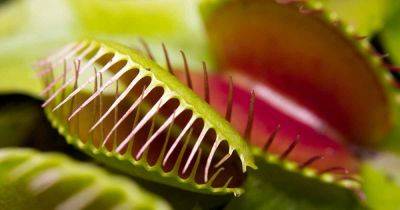
Why Is My Venus Flytrap Turning Black?
Why Is My Venus Flytrap Turning Black?
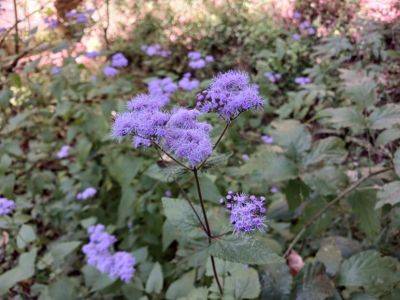
Blue Mistflower
Every fall, I look forward to the flowers of Blue Mistflower (Conoclinium coelestinum) blooming next to the creek that runs through my neighborhood. The blue flowers resemble the annual flower, Ageratum, and one of its common names is Wild Ageratum. However, Blue Mistflower is a perennial wildflower.
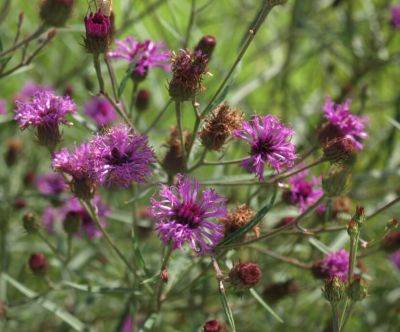
Ironweed
Fall has arrived in South Carolina! Native fall-blooming wildflowers, with their flower colors of intense purple, yellow, orange, and white hues, brighten up the autumn landscape. One of my favorites is Ironweed (Vernonia species), with its vivid, deep purple flowers that bloom in late summer to early fall.

These Dogs are in Crisis. Who Looks After the Guardians?
On the last Tuesday of August, a vehicle pulled into Providence Farm in McLeansville, North Carolina. Joy Combs had been expecting these guests—they were from the Carolina Great Pyrenees Rescue (CGPR), and they were there to drop off a five-year-old Anatolian Shepherd named Max. Combs planned to work with the rescue to evaluate his behavior with farm animals and help place him in an appropriate home.
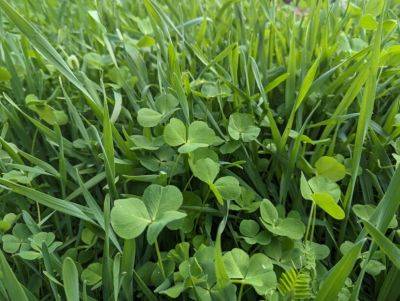
A Lazy Gardener Gets Climate-Smart
Last year, the United States Department of Agriculture announced a $70 million investment into a Clemson-South Carolina State partnership “to increase the acreage and number of farmers using cover crops, prescribed grazing, reduced tillage, and other conservation practices that will not only reduce greenhouse gases but also improve water quality, biodiversity, and increase the productivity and well-being of our greater farming and foresting communities across the state.” The partnership and initial investment have evolved into Climate-Smart Grown in SC (CSGSC), a program incentivizing South Carolina farmers to implement selected climate-smart production practices. This program is a big deal, but a lot is going on, so it may have been lost in the shuffle for many of us.

Food Safety During Hurricane Season
The official hurricane season begins June 1st and lasts through November 30th. According to a comprehensive summary by the South Carolina Department of Natural Resources, South Carolina has an 80 % chance of being impacted by a tropical storm yearly. September has seen the highest total of named storm impacts and landfalls. Hazards of tropical storms and category hurricanes include storm surge, inland flooding, wind, and tornadoes. These hazards can cause road and home damage and power outages for periods of time. When power is out for some time, it can cause foods in your refrigerator and freezer to spoil. If storms impact your area, here are some food safety tips during power outages:
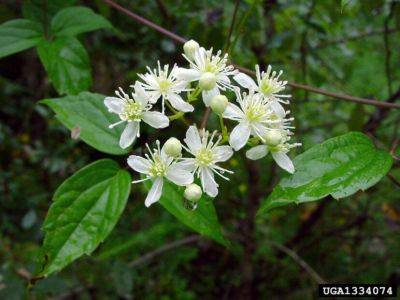
Invasive Plant Spotlight: Sweet Autumn Clematis
If you’ve been noticing masses of showy white flowers rambling over vegetation along the roadsides, it might be Sweet Autumn Clematis (Clematis terniflora). Also known as Sweet Autumn Virginsbower, this non-native invasive species was originally introduced as an ornamental but has since escaped cultivation. It is reported to be invasive in at least 10 states, including South Carolina. You’ll often find it invading forest edges, rights-of-way, and the edges of disturbed areas.
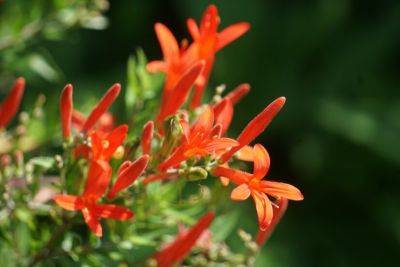
September 4 Week 1 Garden Photos
Come for a visit to the South Carolina Botanical Gardens to see what’s in bloom!
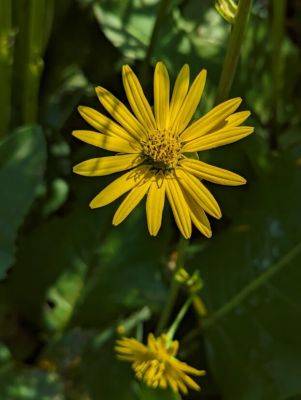
Prairie dock, prairie rosinweed
Prairie dock (Silphium terebinthinaceum) lines the roadside edge of our Piedmont Prairie Exhibit at the South Carolina Botanical Garden. This plant is towering over the grasses and other prairie plants at about 10 feet tall. At this time of year, mid to late August, it is in full flower. The spray of yellow flowerheads at the head of the bare, tall stems is stunning against the blue summer sky. Each composite flower is about 2 – 2 ½ inches across, and each plant will flower for about a month. Today, when I left work, the flowers were covered in eastern swallowtail butterflies dancing in the breeze. Other pollinators are also attracted to the blooms, which are held high above the competing vegetation. Long-tongued bees, many small bees, hoverflies, and hummingbirds are all regular visitors. Goldfinches and probably other small birds and mammals are attracted to the seeds.
Popular Locations
Have great time reading State South Carolina Ideas, Tips & Guides and scrolling State South Carolina stuff to learn new day by day. Follow daily updates of our gardening & homemade hacks and have fun realizing them. You will never regret entering this site greengrove.cc once, because here you will find a lot of useful State South Carolina information, different hacks for life, popular gardening tips and even more. You won’t get bored here! Stay tuned following daily updates and learning something new for you!
